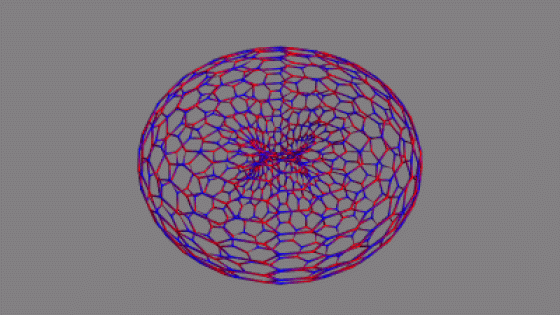Project leader: Professor Jianfeng Lu
Project managers: Stephen McKean and Kevin Stubbs
Team members: Santino Panzica, Will Strong, Luke Triplett
Phases of matter are characterized by the symmetries they preserve. For example, solids preserve orientation and periodicity, while liquids preserve neither. And between them, there are states of matter which preserve these symmetries to varying degrees. Thus, phase changes are characterized by these symmetries breaking or initializing. In addition to spatial symmetries such as these, we can also look at time-symmetry to get a more complete picture of how some special materials behave. Traditionally, matter is not sensitive to whether time flows forward or backward. However, the electromagnetic properties of some materials (called topological materials) do not respect this “time reversal symmetry.” Some of these are topological insulators, which have useful electrical properties: the interior is an insulator, while the exterior is a conductor. Our project studied the behavior of these topological insulators.
In this project, we set out to understand and characterize both periodic and aperiodic topological insulators. As our first step, we looked at the 1D Su-Schrieffer-Heeger (SSH) model to gain a basic understanding of the topological properties of materials. The SSH model describes an electron hopping along a chain of cells, with each cell having two sites. Specifically, we saw how a topological invariant, the winding number, can tell us about the energy band plots of a system and ultimately whether a particular system is a topological insulator. When the winding number is non-zero, the system will have conducting edge states. Next, we learned about the 2D Haldane model, which has the structure of a honeycomb lattice. Just as the winding number did in 1D, the Chern number is a topological invariant that identifies edge states. Our main focus was to look at and gather data about what happens when we slightly alter the Haldane model by adding random noise (in the form of onsite potential). The lack of periodicity makes the Chern number undefined, so we instead used the Chern marker. In addition, we learned about the relation between the Chern Marker and the existence of an exponentially localized basis. With the tools we learned, we calculated these values (localization of Wannier basis, energy gap, and Chern Marker) for many different parameters of the perturbed Haldane model. As expected, we found that the topological behavior did remain the same, as did Wannier localization, as long as the magnitude of the random noise was smaller than the energy gap of the system.

